Multiple Locations SEO: How to Rank Well and Outrank Your Competitors
According to recent local SEO statistics, 93% of consumers used online searchers to find local businesses. It means that if you apply great local SEO practices, you’re attracting more customers than those who aren’t.
Imagine your company has grown quickly with new franchises or branches in numerous cities and nations.
You’re now serving multiple regions, shipping internationally or globally.
The question remains: How can I get more customers to my branches in various locations through giant search engines like Google?
That’s what we’re going to discuss in this article! But before diving into the best practices to rank for multiple locations, let’s discuss multiple-location SEO.
What is Multiple-Location SEO?
Multiple-location SEO focuses on ranking your website for multiple geographic locations. It allows you to increase search traffic from multiple regions. This can be important for businesses with multiple physical locations or serving customers in different regions.
For instance, you have a few pizza shops across London, and one of your stores is in Kensington, London.
If your pizza store shows up on Google’s Snack Pack (formerly known as Google Local 3-Pack, or the map listing as shown in the screenshot below), there is a high chance that you’re getting more clicks to your site.
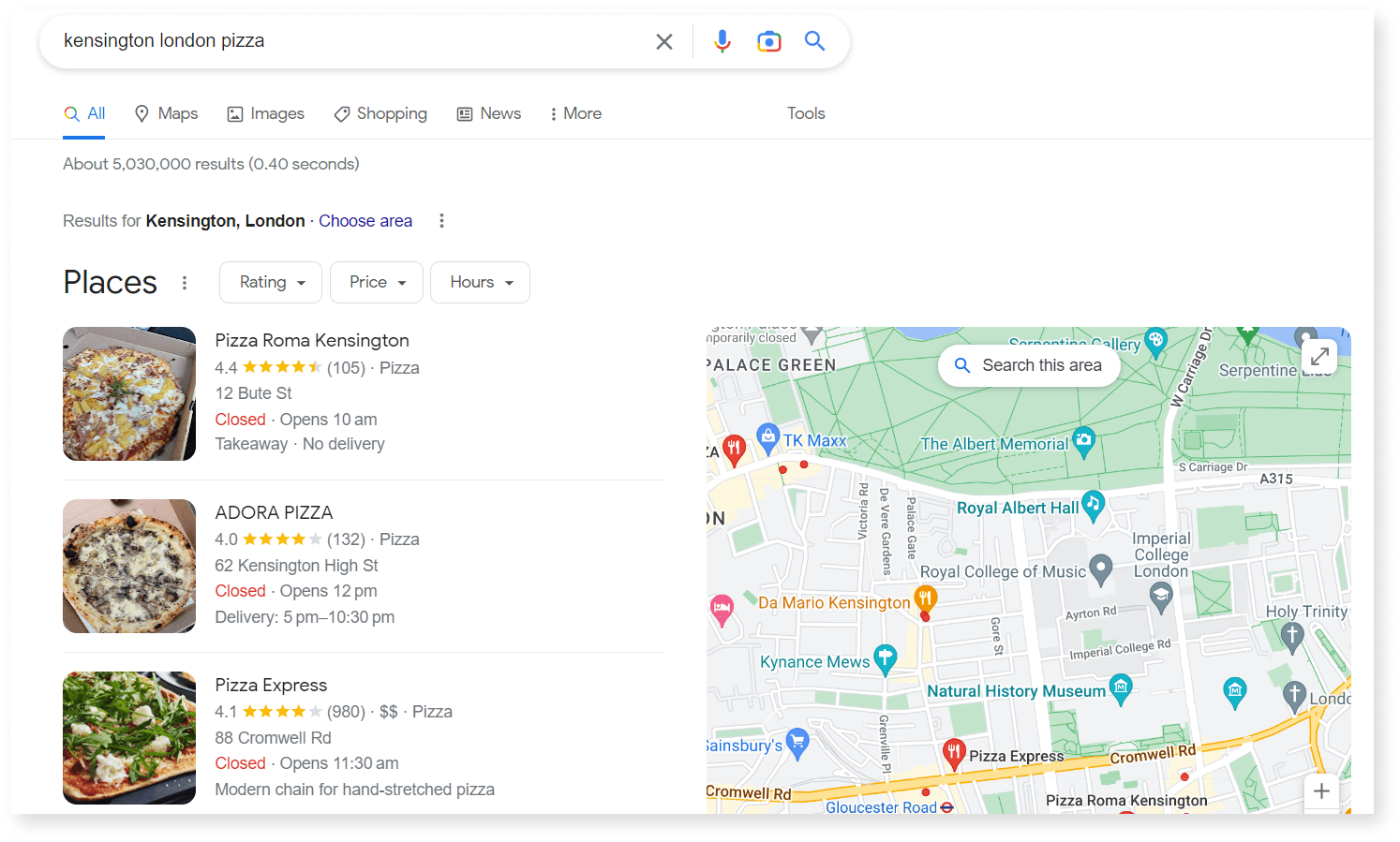
Recent research shows that 48.3% of the clicks go to Google’s Snack Pack (it’s almost as if you’re ranking in the second search position on Google!).
Hence, developing a solid SEO strategy is crucial to gain more leads from different locations. Check out these powerful SEO strategies for more in-depth information about bringing your SEO strategy to the next level.
In short, multiple-location SEO allows search engines to distinguish between numerous locales. Thus, local shoppers can obtain useful information regarding the items and services offered by neighbouring retailers.
Steps to Optimize for Multiple locations
Now you know that multiple-location SEO is crucial in enhancing brand awareness and increasing sales and conversion. Follow the steps below to learn how to rank for multiple locations.
Create a Page for Each Location on Your Website
The initial step to rank for multiple locations is to create a page for each location on your website.
For instance, if you want more customers from London, you should set up a page targeted at London areas. You can even go into more detail by adding specific districts, such as Kensington, to your page.
When you create a new page, you should add the location to your URL. For instance, you have a pizza store in Kensington. London. Your URL should look like this:
- mypizzastore.com/locations/london (for a specific state)
- mypizzastore.com/locations/london/kensington (for a specific district)
Optimize Your Page with Local Keywords
Once you have created pages, you need to optimize your pages around your location keywords so that Google knows this page is optimized for local purposes.
But before you optimize your page, you need to know the keywords your customers use when searching for pizza.
So how do you find those keywords? One of the easiest ways to find suitable keywords is using Ubersuggest.
Open Ubersuggest, go to “Keyword Ideas,” then insert a few seed keywords such as “pizza kensington london” or “best pizza in kensington london” and click “Search”.
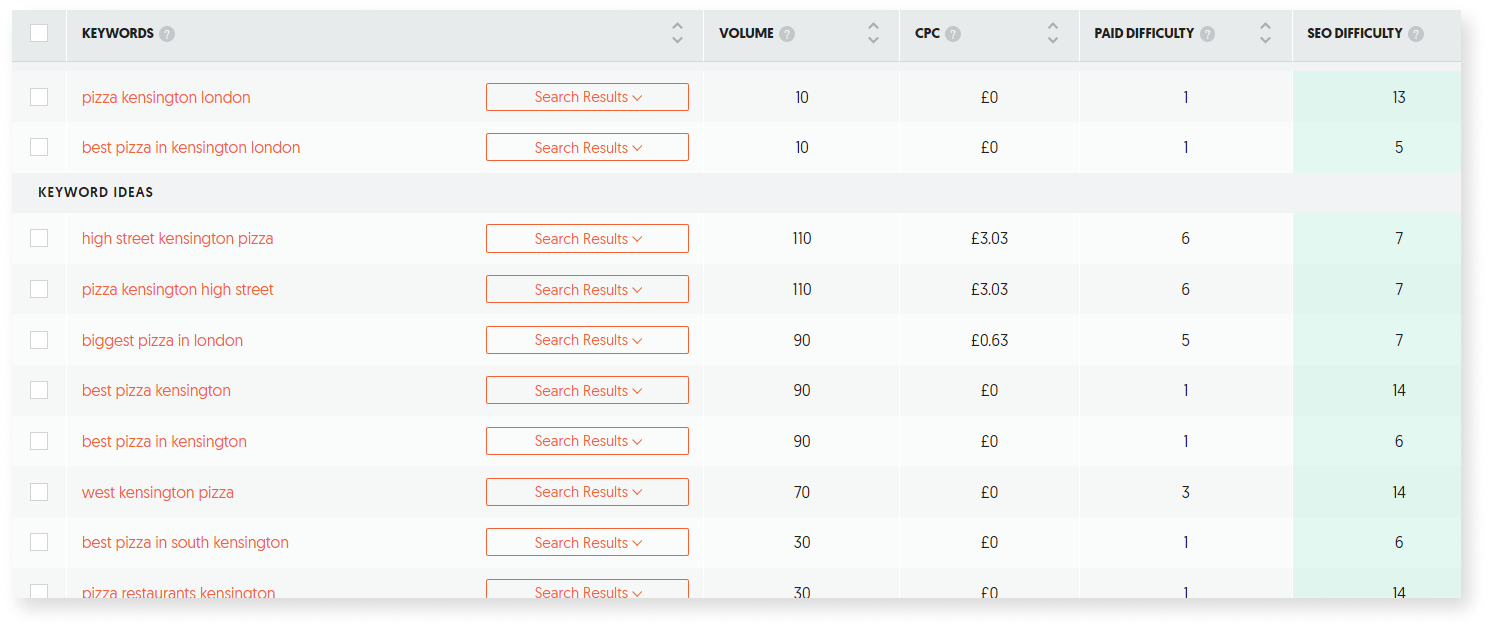
You will see a lot of suggested keywords that are related to your business. Choose 5-10 keywords with high search volume but low SEO difficulty.
Once you have selected the keywords, place them in an Excel file. Read this keyword research SEO Checklist if you’re interested to discover more lucrative keywords for your business.
After confirming your keywords, you should include your keywords in the following:
- Title and subheadings (H1, H2 tags)
- Website content
- Meta description
- Image ALT texts
Although the presence of keywords is crucial, don’t spam your keywords everywhere. You should include them in a way that is natural and not spammy. Here’s a great example of how a website optimizes local keywords without spamming.
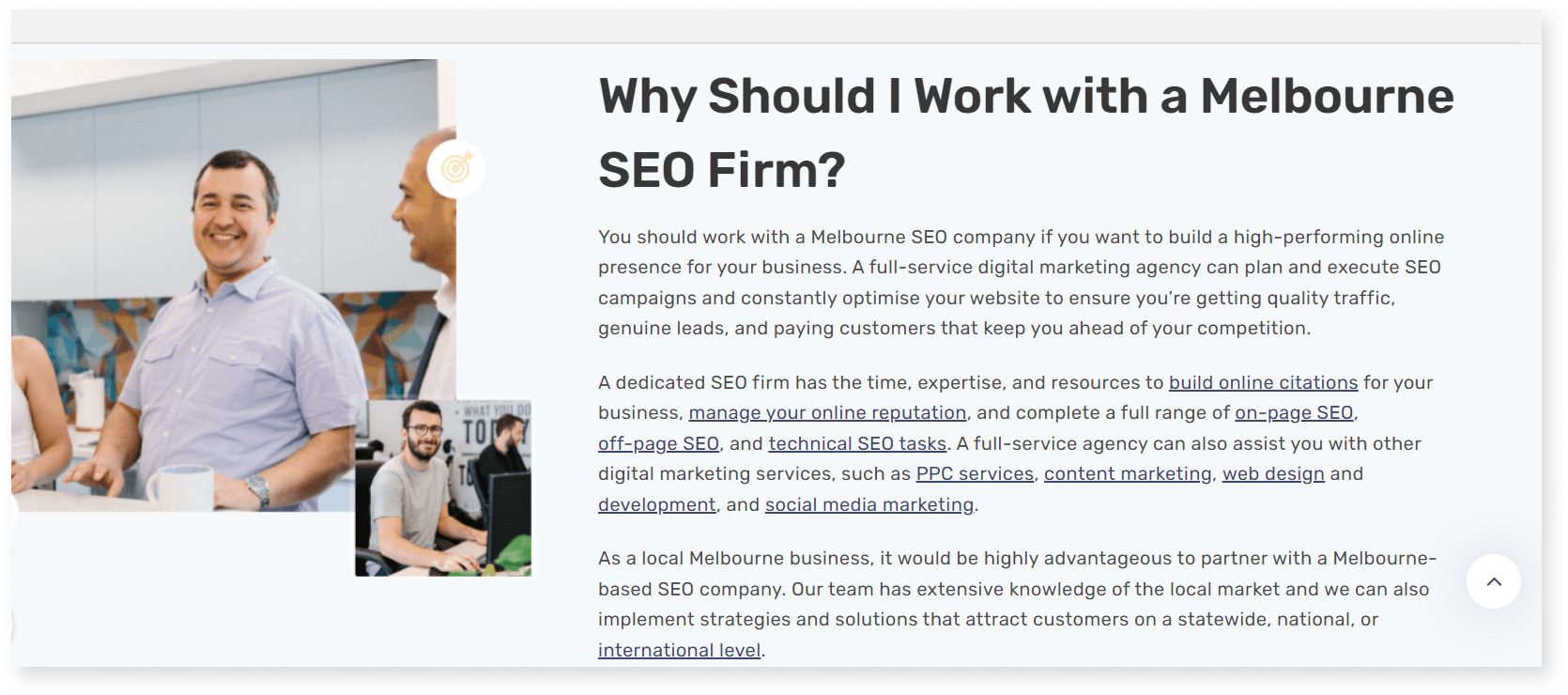
Create Great Location-Relevant Content
Don’t forget to tailor your content based on your location! Although it takes effort to create this content, especially if you’ve many locations, it’s still worth it as location-relevant content has a higher click-through rate than general content.
Here are some areas of your website that you should take note of when you’re creating localized content:
- Product pages. This is crucial if you have outlets or branches in different countries with different languages. You can use Google translate plugin or hire translators to provide copies in native languages.
- Images. Add images of your physical outlets and event photos to build trust.
- Reviews. It’s best if you can highlight native reviews. For example, if you have branches in Japan, you should showcase reviews from your customer in Japan instead of London or the United States.
Setup Google My Business
Setup Google My Business is essential to rank for multiple locations. Google My Business boosts your brand awareness and increases your opportunity to show on Google’s Snack Pack.
Therefore, you should set up a Google My Business profile for each targeted location. If you’re unsure how to set up a Google My Business profile, check out this article from Google.
Once you have created the profile, make sure you remember to fill up this information:
- Business name, address, and phone number
- Business categories
- Services
- Business description
- Operation hours
- Upload photos and videos (both company and products, if applicable)
Google My Business also allows you to activate messaging feature, which helps to encourage more visitors to contact you.
If you already have Google My Business profile for all locations, you should continue to optimize it by uploading new photos and creating new Google My Business post to inform visitors of your new events.
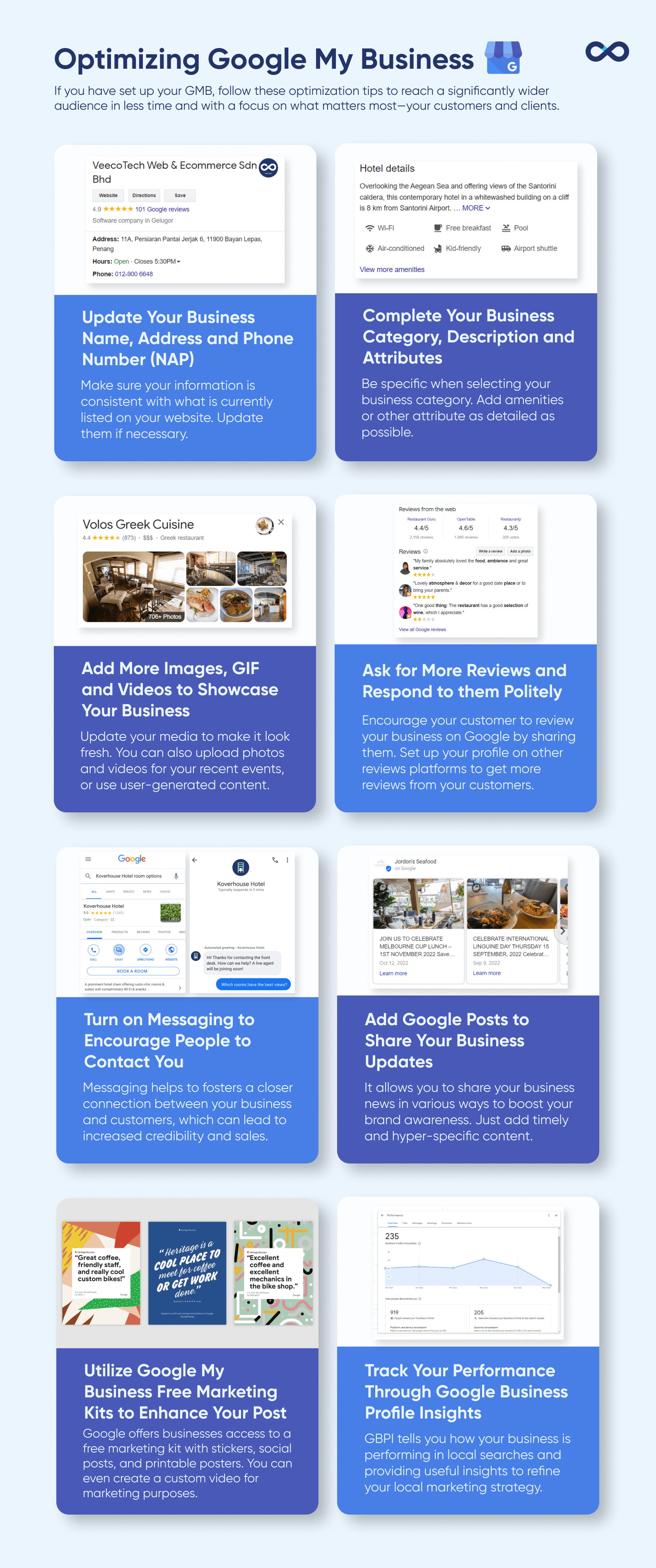
Encourage Customers to Give Reviews
According to local SEO research by Loganix, reviews are one of the most crucial ranking factors to rank in Google’s Snack Pack and local organic ranking.
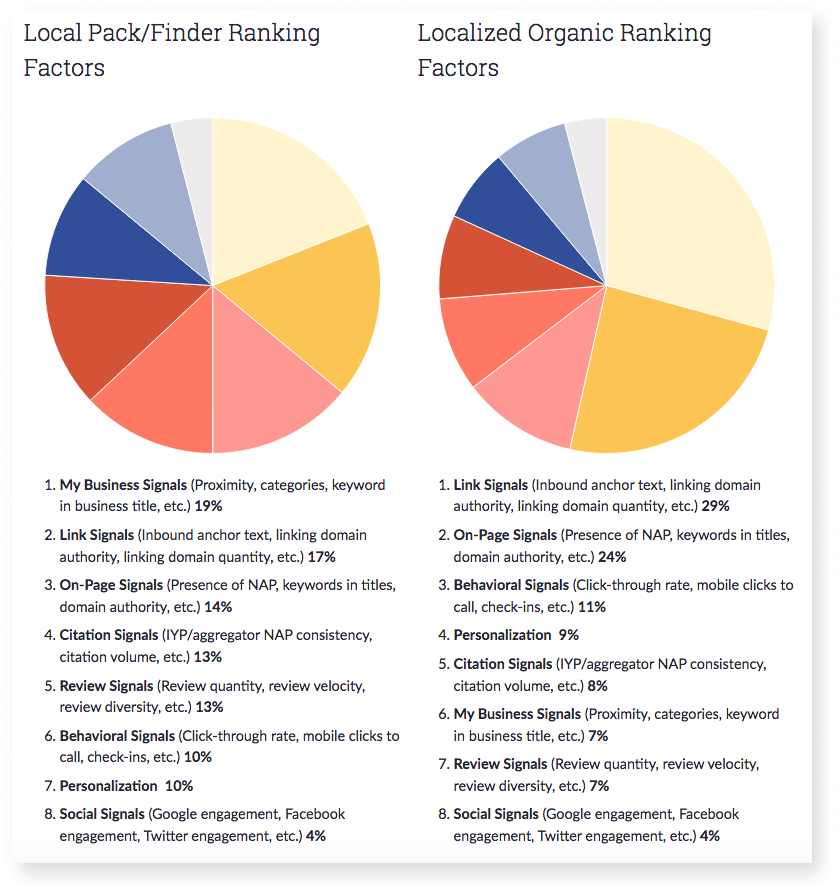
Source: Loganix
Besides, research also shows that nine out of ten consumers will read the reviews of a business before they buy products or get services from it. Therefore, you need to try to collect as many reviews as possible if you want to rank for multiple locations.
Here’s a great example from a local dental clinic in Penang, Malaysia, that gets a lot of positive reviews from its patients.
“I set a number of reviews as a KPI for every staff. But my main purpose is to encourage them to keep building relationship with my patients.” said Dr. Felicia, the principal dentist at Skye Dental Penang.
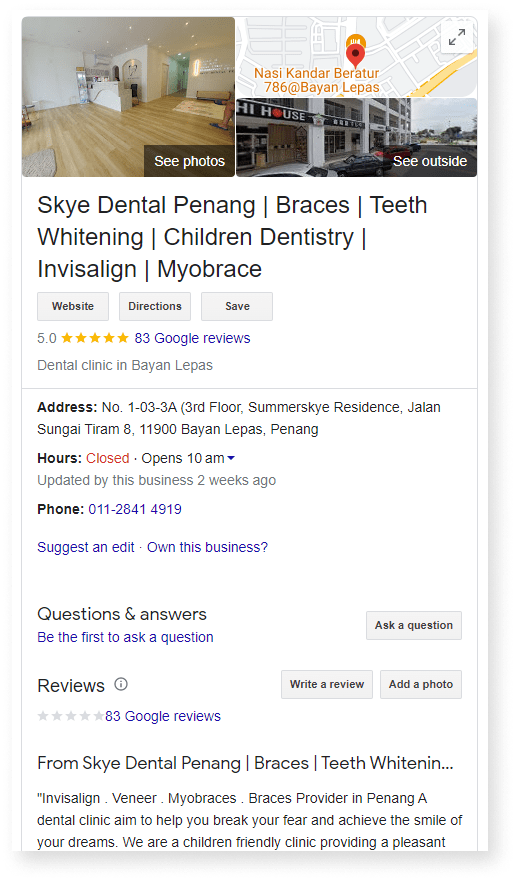
Managing your reviews is difficult, especially if customers give you bad reviews. So we have highlighted some effective ways to encourage your customers to write reviews for your business:
- Create a Google review shortcut link. Here’s a guide to creating a Google review shortcut link.
- Embed a Google review link on your website
- Include a Google review link in the footer
- Run a Google review email campaign
- Ask for more reviews on social media
- Respond to your Google review. You can use this AI tool to help if you don’t know how to reply politely.
Create Local Business Listings for Each Location
Besides using Google platforms, you can enhance your multiple location ranking by creating local business listings such as Yelp, Angie’s List, and Yellow Pages. By having various business listings, you’re improving your brand visibility as your brand appears across various platforms.
Besides, local business listings allow you to get more client reviews, as different clients prefer different platforms.
Let’s say you have a hotel industry business and want to rank for multiple locations. You can create local business listings on Trip Advisors, Expedia, Trivago and Yelp. Doing this means you’re getting more reviews compared to only using one platform.
If you’re in Malaysia, here are some best local listing sites you can try out:
You can also add links to your location-specific pages on your website. This way, customers can get more information about your business with a click of a link.
Build Backlinks for Each Location
Another crucial factor in ranking for multiple locations is building backlinks to your location-specific pages. Google “sees” backlinks as a trust signal of your website.
The more quality backlinks you have, the higher the authority you are. Hence, you must continuously monitor and grow your backlinks to ensure you rank continuously.
There are numerous ways to build backlinks. One effective way is to reach out to the bloggers in your community, especially those who consistently publish content related to your industry. You can find them by searching for keywords in your industry on Google.
For instance, if you’re an interior designer, you can search for keywords like “interior design blog” to find bloggers that consistently share topics related to interior design.
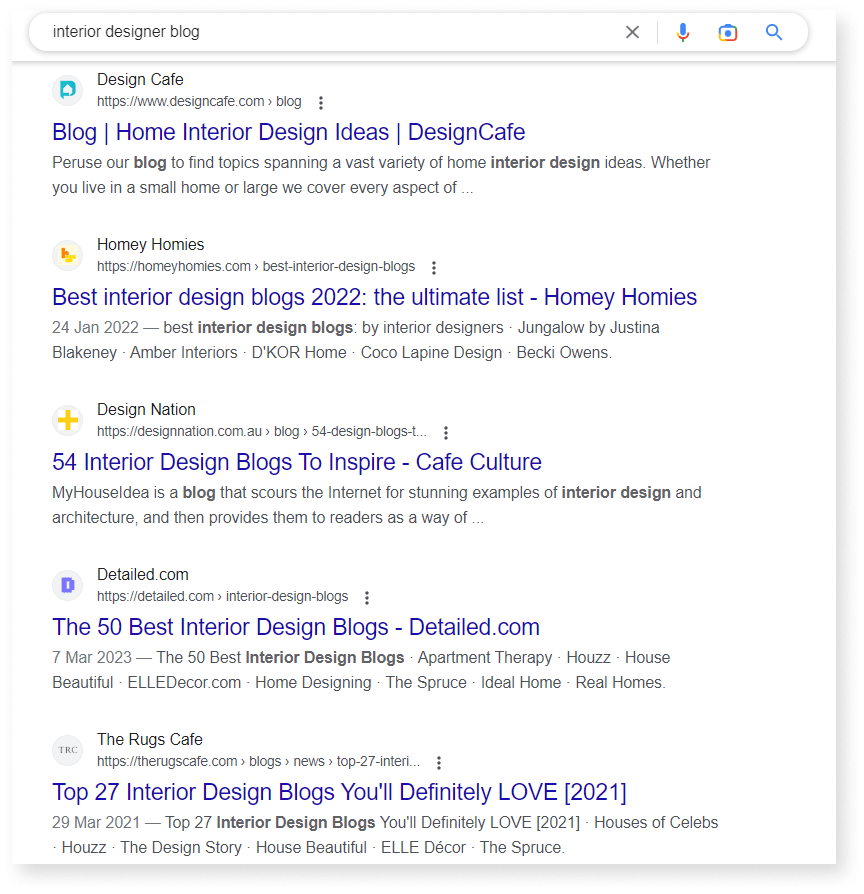
Then, reach out to them and ask them to write a post or review about your interior design projects. You can also try guest posting techniques and contact the owner to submit your post.
Another way to get backlinks for your location-specific pages is local citations. Local citations refer to If you have business in the US, one of the best ways to get local citations is submitting your site to data aggregators such as Express Update, Neustar Localeze, and Factual.
These companies collect business information and distribute it to hundreds of other websites. Hence, you have the opportunity to get a lot of citations if they have your business information.
Conclusion
Multiple-location SEO can provide numerous benefits for a corporation.
You will have the chance to improve brand awareness and attract local customers. Since many individuals conduct local searches, you can increase customer acquisition outcomes.
When it comes to SEO for various locations, one of the best ideas I can provide is to adopt local SEO best practices for each location.
A one-size-fits-all approach is ineffective and can result in fewer website visitors, prospects, and clients for your firm. But you may win big by combining brand recognition with a great local strategy.
To reap the benefits of this SEO method, you must design and optimize a page for locations important to your organization. Then, solicit feedback and build local business listings so clients can evaluate your company accurately.
I hope this multiple-location SEO guide helps you to grow your business!


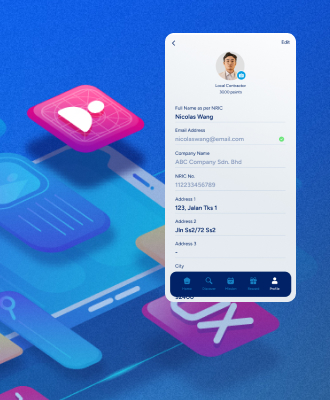

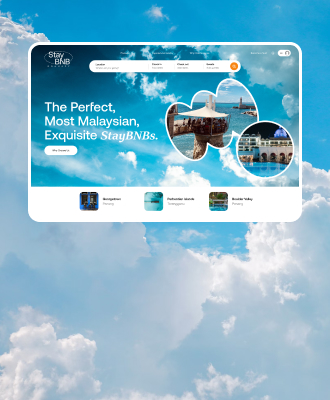

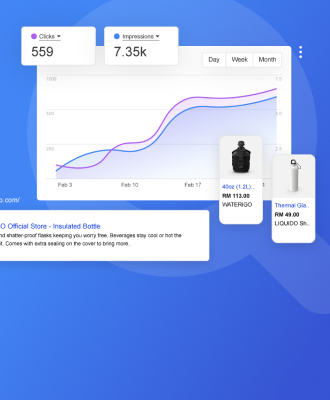
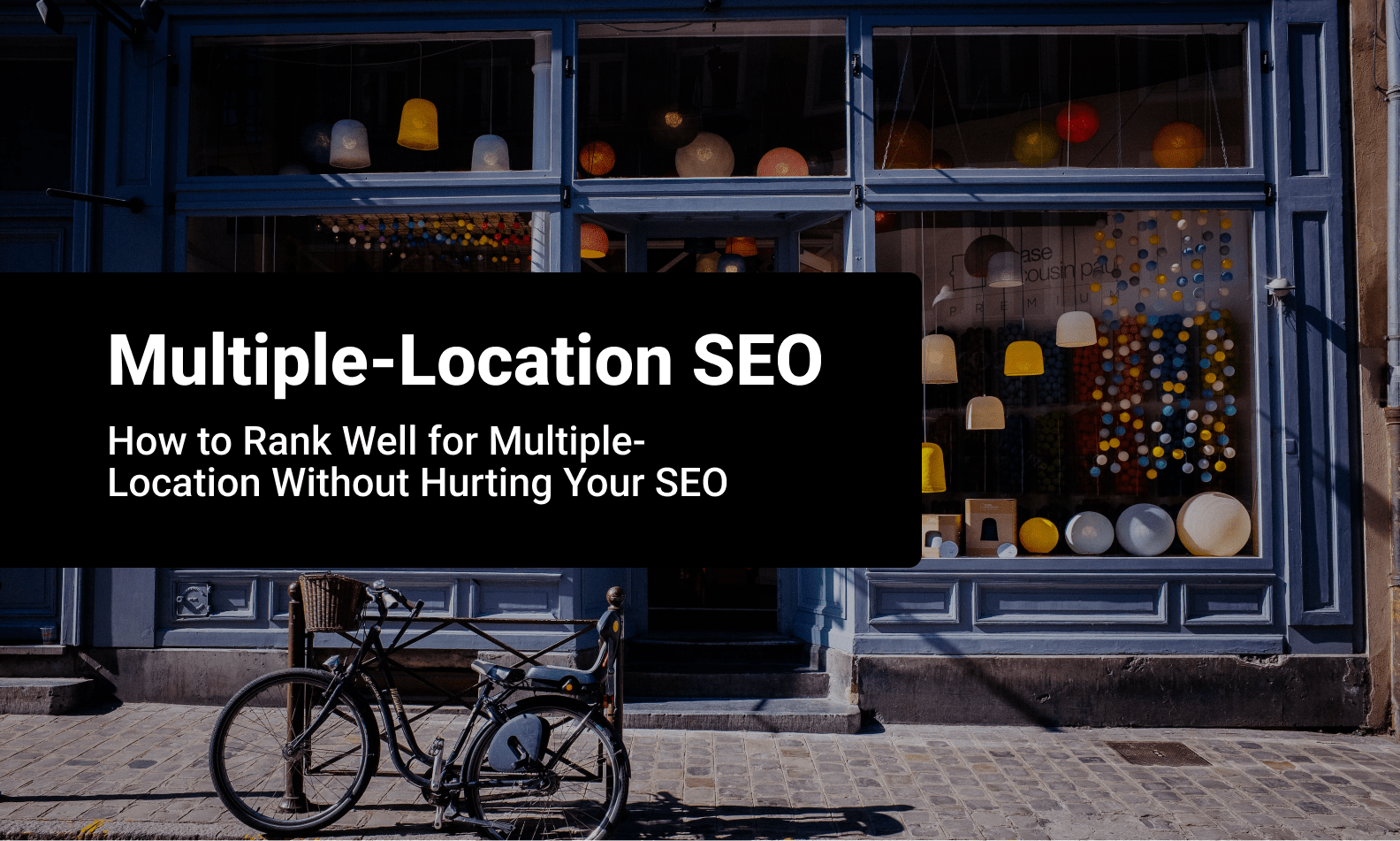






Leave A Comment